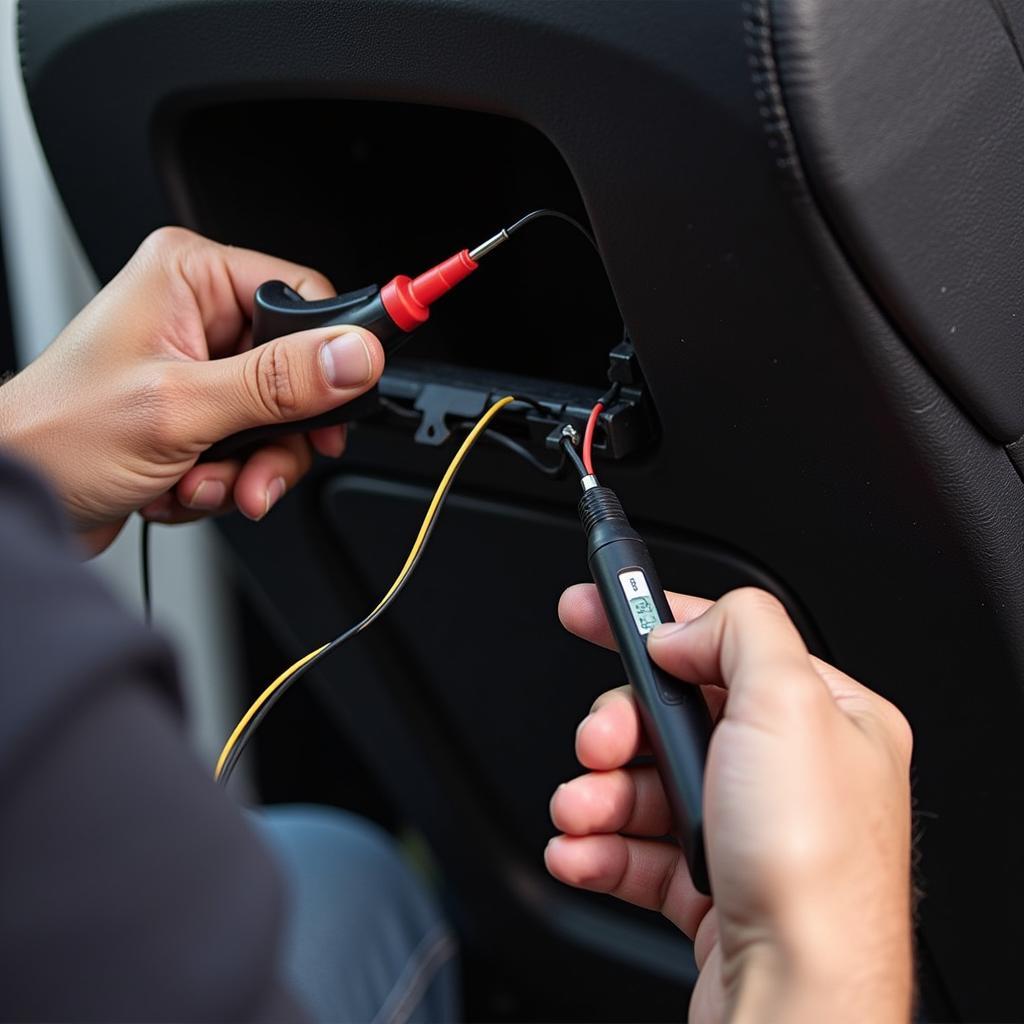Car seat built-in warnings are crucial safety features designed to protect passengers, especially children. These systems alert drivers to potential hazards, ensuring proper car seat installation and usage. This article delves into the intricacies of car seat built-in warnings, explaining their function, common issues, and troubleshooting steps.
Understanding these warnings is paramount to ensuring passenger safety. Malfunctions can lead to unnecessary stress and potentially compromise safety. Just like the importance of understanding the location of the seat belt warning chime, as discussed on 85 928 seat belt warning chime location, knowing how to address car seat warnings is crucial. Different systems exist, each with unique functionalities and potential problems.
Types of Car Seat Built-In Warnings
Car seat built-in warnings vary depending on the car model and seat type. Common types include:
- Weight sensors: These sensors detect the weight in the car seat and trigger a warning if it falls outside the acceptable range for the specific seat.
- Latch system indicators: Modern car seats use LATCH (Lower Anchors and Tethers for Children) systems for secure installation. Built-in indicators alert the driver if the LATCH system is not properly engaged.
- Occupancy sensors: Advanced systems use sensors to detect the presence of a child in the car seat and can alert the driver if the child is left unattended. This is similar in concept to the baby car seat warning system designed to prevent children from being left in hot cars.
- Buckle sensors: Sensors in the car seat buckle can detect if the buckle is fastened correctly.
How Car Seat Warnings Work
These systems typically use a combination of sensors, electronic control units (ECUs), and warning lights or chimes to alert the driver. The sensors monitor various parameters, and if a problem is detected, the ECU triggers the warning signal.
Common Issues with Car Seat Built-In Warnings
Several issues can cause car seat built-in warnings to malfunction:
- Faulty sensors: Damaged or malfunctioning sensors can trigger false alarms or fail to detect genuine problems.
- Wiring problems: Loose or damaged wiring can disrupt communication between the sensors and the ECU.
- ECU malfunction: A malfunctioning ECU can misinterpret sensor data or fail to trigger warnings.
- Software glitches: Software problems within the car’s system can affect the car seat warning system. This can sometimes be addressed through remote software updates, similar to resolving issues like a ford f150 trailer brake disconect warning.
Troubleshooting Car Seat Warning Lights
If you encounter a car seat warning, follow these steps:
- Check the car seat installation: Ensure the car seat is correctly installed and secured using the LATCH system or seat belt.
- Inspect the wiring: Visually check the wiring connections to the car seat and sensors for any damage or looseness.
- Consult the owner’s manual: Your car’s owner’s manual provides specific information about the car seat warning system and troubleshooting tips.
- Seek professional help: If you cannot resolve the issue, consult a qualified automotive technician specializing in car seat warning systems. They can perform diagnostic tests and identify the root cause of the problem.
 Inspecting Car Seat Wiring Connections
Inspecting Car Seat Wiring Connections
Why is My Car Seat Warning Light On?
The car seat warning light can illuminate for several reasons, from a simple installation issue to a more complex electrical fault. It’s crucial to address the warning promptly.
How to Reset Car Seat Warning Light
Resetting the car seat warning light often involves fixing the underlying issue. Once the problem is resolved, the warning light should turn off automatically. However, in some cases, a diagnostic scan tool might be needed to reset the warning system.
“Regularly checking your car seat’s installation and addressing any warning lights promptly is crucial for passenger safety,” advises John Smith, Senior Automotive Safety Engineer at AutoSafe Solutions. “Don’t ignore these warnings; they are there to protect your loved ones.”
Conclusion
Car seat built-in warnings are essential safety features that require proper understanding and maintenance. By addressing these warnings promptly and following the troubleshooting steps, you can ensure the safety and well-being of your passengers. Remember, just as you would address a warning light like the one discussed in seat ibiza bulb monitoring warning light, paying attention to car seat warnings is vital. Ignoring these warnings could compromise safety. While seemingly unrelated, even understanding historical contexts like the in bible warning of giving best seat underscores the importance of prioritizing safety and proper positioning.
FAQ
- What does the car seat warning light mean? It indicates a potential problem with the car seat’s installation or function.
- How do I turn off the car seat warning light? Fix the underlying issue, and the light should turn off automatically.
- Can I drive with the car seat warning light on? It’s not recommended as it may indicate a safety risk.
- What if the car seat is installed correctly, but the light is still on? There might be a sensor or wiring issue.
- Where can I get my car seat warning system checked? Consult a qualified automotive technician.
- How often should I check my car seat’s installation? Regularly, especially after any adjustments or accidents.
- Are car seat warnings mandatory? Regulations vary, but they are becoming increasingly common in modern vehicles.

